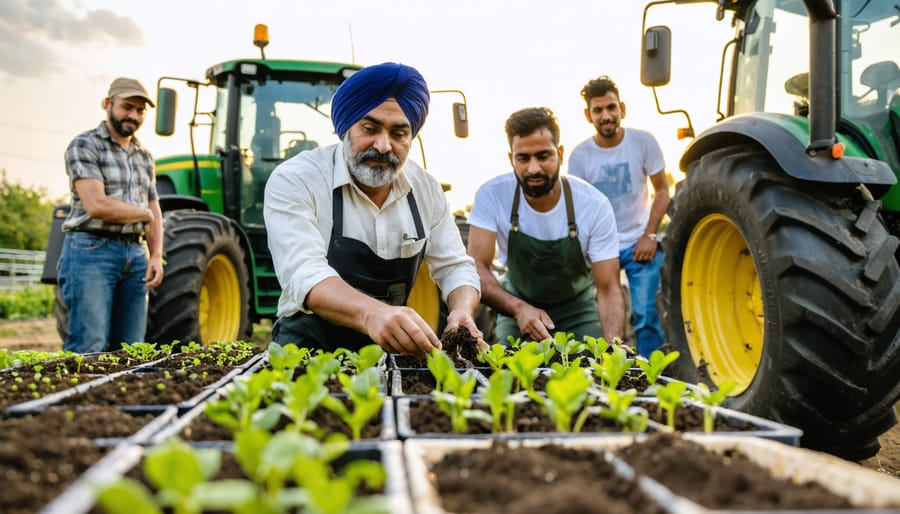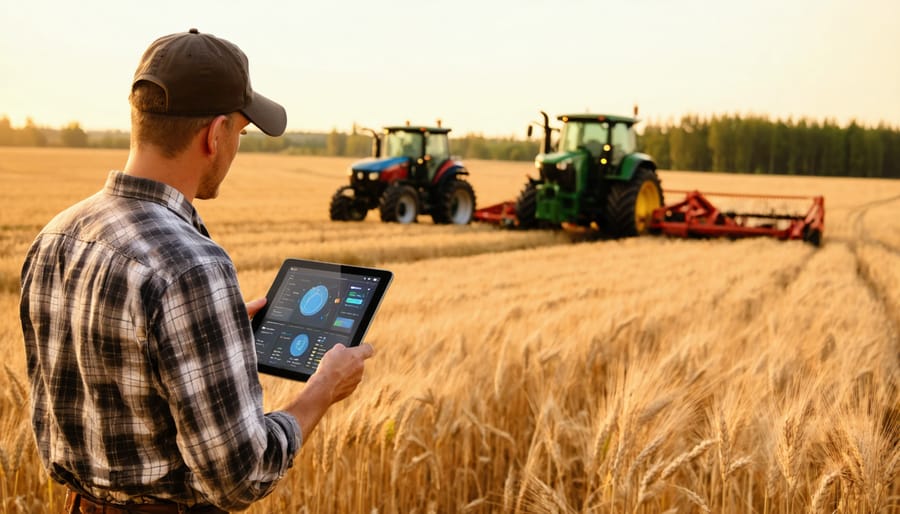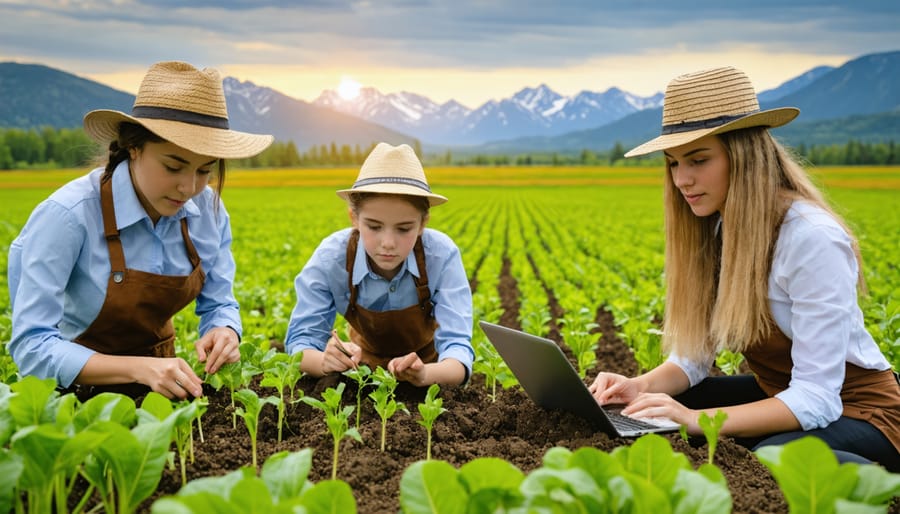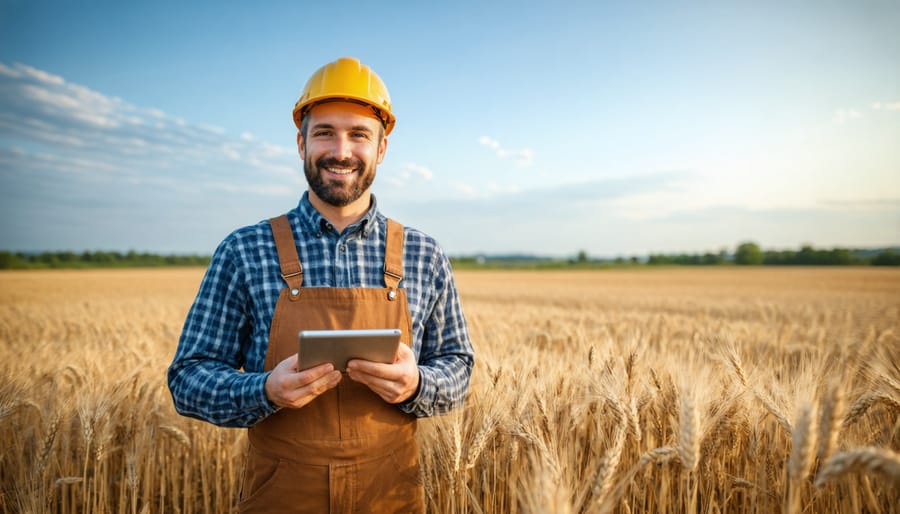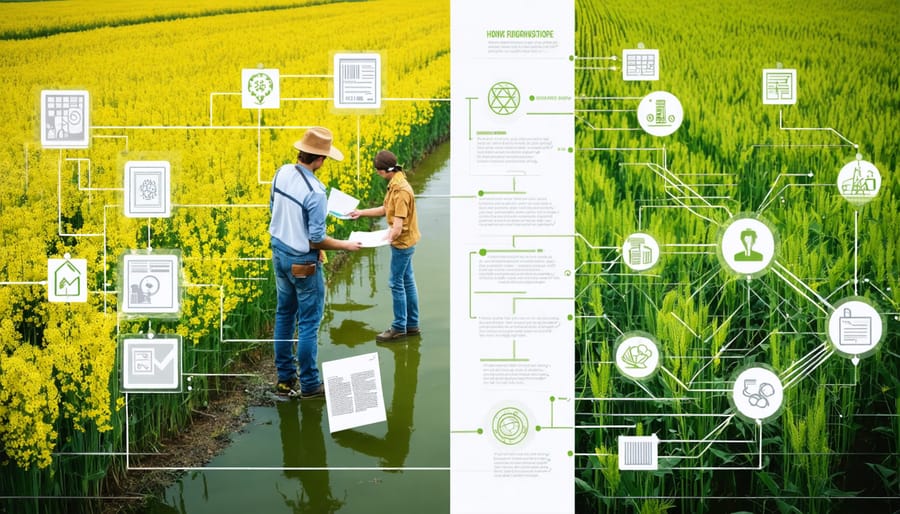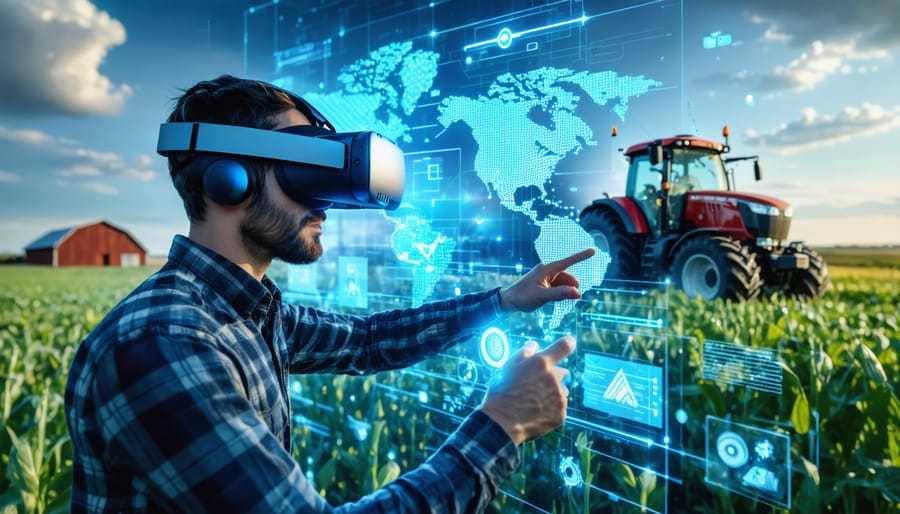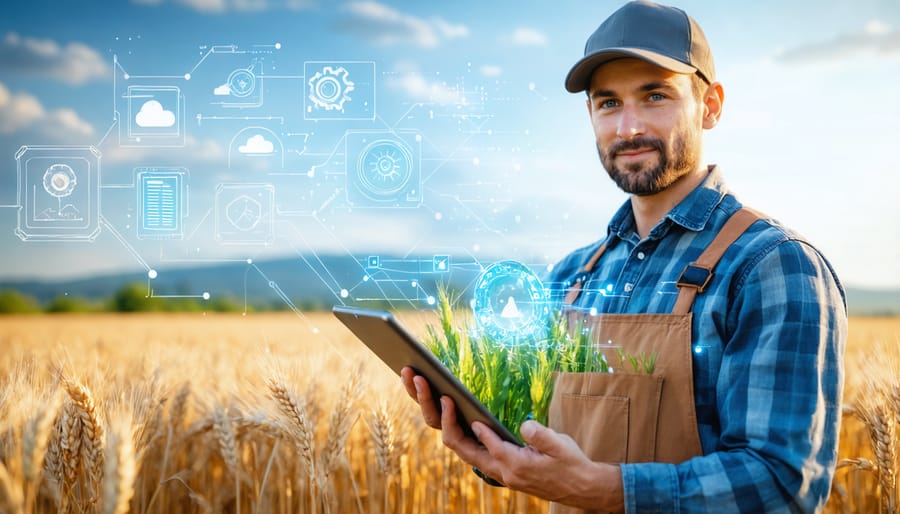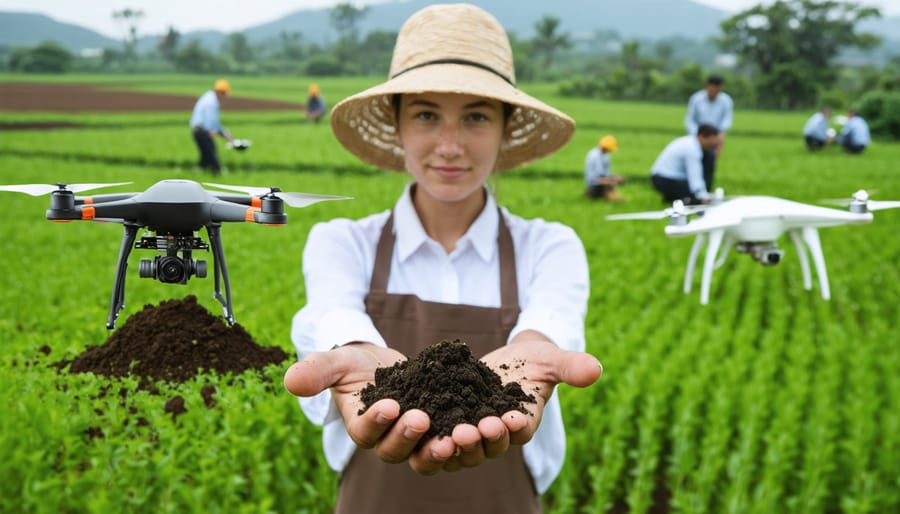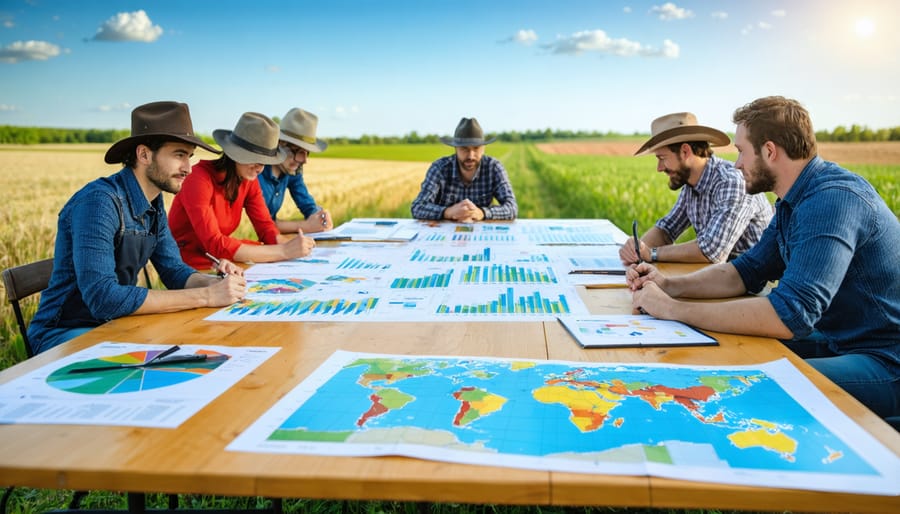Digital agriculture stands at the forefront of modern farming’s evolution, transforming traditional practices through data-driven decision-making and smart technology integration. Across Canada’s prairies and beyond, farmers are harnessing the power of sensors, satellites, and artificial intelligence to optimize every aspect of their operations – from precise seeding to targeted irrigation. This agricultural revolution isn’t just about incorporating new tools; it’s fundamentally reshaping how we grow food, manage resources, and ensure sustainable food production for future generations.
In Alberta’s farming communities, digital agriculture has become particularly crucial as producers face increasing climate variability and market pressures. Real-time soil moisture sensors now guide irrigation decisions, while GPS-guided equipment reduces input costs and environmental impact by eliminating overlap in seeding and spraying. These technologies, combined with machine learning algorithms that predict crop yields and detect early signs of disease, are helping farmers make more informed decisions while improving productivity and sustainability.
This digital transformation represents more than just technological advancement – it’s creating a new era of farming where data-driven insights meet generations of agricultural wisdom, ensuring Canadian farmers remain competitive in the global marketplace while stewarding their land for future generations.
The Core Elements of Digital Agriculture
Smart Farming Technologies
Modern farming has evolved significantly with the integration of digital agronomy tools and smart technologies. Across Alberta’s farmlands, precision agriculture equipment now includes GPS-guided tractors, drone mapping systems, and automated irrigation controllers that help optimize resource usage and improve crop yields.
Soil moisture sensors and weather stations provide real-time data, enabling farmers to make informed decisions about irrigation and crop management. These sensors, typically placed throughout fields, transmit data to smartphones or farm management systems, helping producers monitor field conditions from anywhere.
Internet of Things (IoT) devices are becoming increasingly common on Canadian farms. Smart equipment can track everything from grain bin temperatures to cattle movement patterns, while automated feeders ensure livestock receive precise nutrition. Many Alberta farmers are implementing these technologies alongside traditional practices, creating a hybrid approach that combines generations of farming wisdom with modern innovation.
Remote sensing technologies, including satellite imagery and drone surveys, help monitor crop health and detect potential issues before they become visible to the naked eye, allowing for early intervention and reduced crop losses.
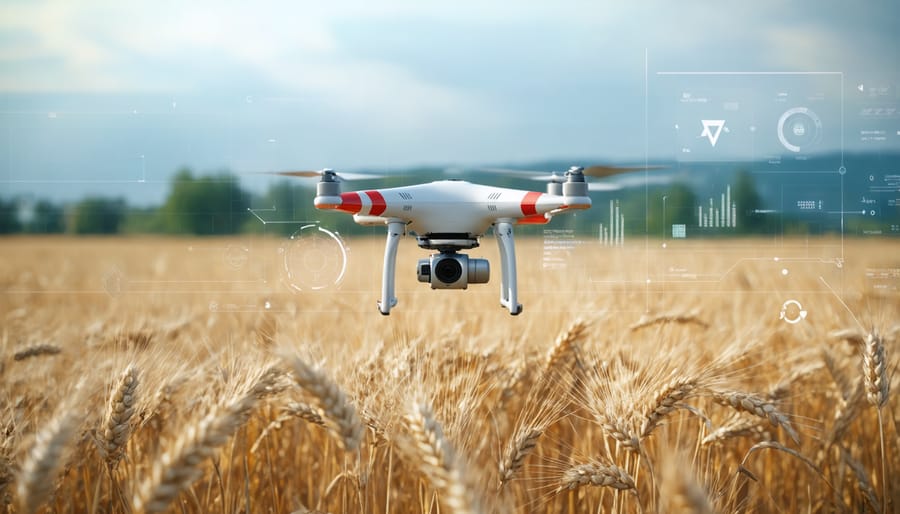
Data-Driven Decision Making
Digital platforms are revolutionizing how Canadian farmers make critical decisions about their operations. By collecting and analyzing data from various sources – including soil sensors, weather stations, and satellite imagery – farmers can now make choices based on concrete evidence rather than just intuition and experience.
These smart farming systems help producers optimize everything from seeding rates to fertilizer application. For instance, Alberta grain farmers using digital agriculture platforms can receive real-time recommendations for precise irrigation scheduling based on soil moisture data and weather forecasts. This leads to better water conservation and improved crop yields.
The power of data-driven farming lies in its ability to reduce uncertainty. Rather than wondering whether a field needs additional nutrients, farmers can access detailed soil analysis maps and yield data to make informed decisions. Many Canadian producers are now using smartphone apps that provide instant access to their farm’s historical data, current conditions, and predictive analytics.
This shift towards data-informed decision-making not only improves productivity but also supports sustainable farming practices by ensuring resources are used efficiently and effectively.
Digital Education Platforms Transforming Alberta’s Farms
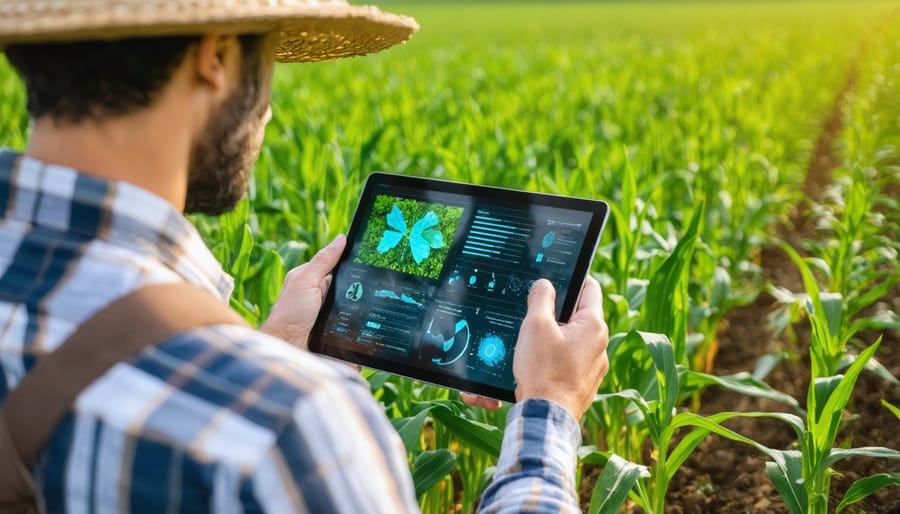
Online Learning Management Systems
In today’s digital age, agricultural education has evolved significantly with the introduction of comprehensive online learning platforms. These innovative systems provide farmers and agricultural professionals with flexible access to digital learning resources tailored to their specific needs and schedules.
Leading Canadian agricultural institutions now offer sophisticated learning management systems that combine interactive modules, virtual classrooms, and real-time collaboration tools. These platforms feature specialized courses covering everything from precision agriculture techniques to sustainable farming practices, all accessible from remote locations across Alberta and beyond.
What makes these systems particularly valuable is their ability to integrate practical farming knowledge with modern technology. Farmers can access video demonstrations of equipment operation, participate in virtual crop management simulations, and connect with agricultural experts through online forums. Many platforms also include mobile applications, allowing users to learn while in the field or during equipment maintenance breaks.
The University of Alberta’s Digital Agriculture Program, for example, provides farmers with structured online courses that include soil management, precision farming, and sustainable agriculture practices. These courses often incorporate region-specific content, ensuring relevance to local growing conditions and challenges.
These learning systems also facilitate peer-to-peer knowledge sharing, where experienced farmers can share their insights and best practices with others in the community. Regular webinars, discussion boards, and virtual field days help create a collaborative learning environment that strengthens the agricultural community while advancing individual skills and knowledge.
For those new to farming or looking to upgrade their skills, these platforms offer beginner-friendly modules with step-by-step guidance, progress tracking, and personalized learning paths. This accessibility has made agricultural education more inclusive and adaptable to diverse learning styles and experience levels.
Virtual Field Schools and Workshops
Virtual field schools and workshops have revolutionized agricultural education in Canada, making expert knowledge and training accessible to farmers across Alberta and beyond. These digital learning platforms bridge the gap between remote farming communities and agricultural experts, offering flexible learning opportunities that fit around busy farming schedules.
Through live-streamed demonstrations and interactive webinars, farmers can participate in real-time crop diagnostics, equipment maintenance tutorials, and soil management workshops from their own properties. For instance, the Alberta Farm Knowledge Network regularly hosts virtual crop walks where participants can observe and discuss crop conditions with agronomists across different regions.
These digital learning environments often incorporate multimedia elements like 360-degree farm tours, drone footage, and detailed close-up videos of plant diseases or pest infestations. This enhanced visualization helps farmers better understand complex concepts and implement new techniques effectively.
The benefits extend beyond convenience. Virtual field schools create opportunities for peer-to-peer learning, allowing farmers to share experiences and solutions with colleagues across the province. Many platforms include discussion forums and virtual breakout rooms where participants can network and build valuable connections within the farming community.
Recording capabilities mean farmers can revisit sessions during relevant growing seasons or when specific challenges arise. This feature is particularly valuable for seasonal reference and training new farm staff. Additionally, virtual workshops often provide downloadable resources, calculators, and decision-making tools that farmers can use long after the session ends.
For new farmers and those transitioning to digital agriculture practices, these platforms offer structured learning paths and mentorship opportunities, helping build confidence in adopting new technologies and sustainable farming methods.
Real-World Success Stories
Small-Scale Farm Transformation
Meet the Johnsons, a third-generation farming family from Olds, Alberta, who transformed their 160-hectare mixed crop operation through digital agriculture. Five years ago, they were struggling with unpredictable yields and rising operational costs. Today, their farm serves as an inspiring example of how digital transformation can benefit smaller agricultural operations.
The family started small, implementing a soil monitoring system and GPS-guided equipment. Within the first season, they reduced their fertilizer usage by 15% while maintaining yield levels. The real game-changer came when they integrated weather stations with soil moisture sensors, allowing them to make data-driven irrigation decisions.
“We were skeptical at first,” shares Sarah Johnson. “The initial investment seemed daunting, but we started with basic solutions and gradually expanded. Now we can’t imagine farming without these tools.”
The Johnsons now use a smartphone app to monitor their fields, track equipment maintenance, and manage inventory. Their precision agriculture system has helped reduce input costs by 20% and increase crop yields by 12% over three years.
What makes their story particularly relevant is how they approached digitalization step by step, focusing on solutions that addressed their specific challenges. They also participated in local farming technology workshops and collaborated with neighbouring farms to share knowledge and resources, proving that digital transformation is achievable for small-scale operations.
Large Operation Integration
The integration of digital agriculture in large-scale operations is transforming Canadian farming, as demonstrated by the Wilson Family Farm in Red Deer County, Alberta. Operating over 4,000 hectares of cropland, they’ve embraced precision agriculture technologies to optimize their wheat and canola production. Their farm serves as a prime example of successful digital integration in Prairie agriculture.
Using GPS-guided tractors and smart irrigation systems, the Wilsons have reduced their water usage by 30% while maintaining optimal crop yields. Their network of soil sensors provides real-time moisture and nutrient data, enabling precise application of inputs across different field zones. This targeted approach has led to a 25% reduction in fertilizer use and improved soil health across their operation.
The farm’s automated grain storage facilities use IoT sensors to monitor temperature and moisture levels, preventing spoilage and maintaining grain quality. Digital record-keeping and farm management software help track everything from equipment maintenance to crop rotation schedules, streamlining operations and improving decision-making.
Most notably, their drone-based crop monitoring system helps identify pest issues and crop stress before they become visible to the naked eye. This early detection capability has helped the Wilsons reduce pesticide use by 20% while maintaining crop health. Their success demonstrates how digital agriculture can enhance efficiency, sustainability, and profitability in large-scale farming operations.

Environmental Impact and Sustainability
Resource Optimization
Digital agriculture revolutionizes resource management through precise monitoring and control systems, enabling farmers to significantly reduce water and chemical usage while maintaining optimal crop yields. By implementing sustainable farming technologies, producers across Alberta are seeing remarkable improvements in their resource efficiency.
Smart irrigation systems, equipped with soil moisture sensors and weather monitoring capabilities, allow farmers to deliver exactly the right amount of water when and where it’s needed. These systems typically reduce water consumption by 20-30% compared to traditional irrigation methods, while maintaining or even improving crop health.
Similarly, precision agriculture tools help optimize fertilizer and pesticide applications. Variable-rate technology enables farmers to apply inputs at different rates across their fields based on soil conditions, crop requirements, and historical performance data. This targeted approach not only reduces chemical usage but also minimizes environmental impact and cuts operational costs.
Real-time monitoring through IoT sensors and drone imagery helps detect early signs of pest infestations or nutrient deficiencies, allowing for spot treatments rather than blanket applications. Many Alberta farmers report reducing their pesticide use by up to 40% through these precision methods, while maintaining effective pest control.
By combining these digital tools with local knowledge and experience, Canadian farmers are leading the way in responsible resource management, proving that technology can help create more sustainable and profitable farming operations.
Carbon Footprint Reduction
Digital agriculture plays a crucial role in reducing agriculture’s carbon footprint through data-driven decision-making and precision farming techniques. By implementing climate-smart farming practices, Canadian farmers are significantly decreasing their greenhouse gas emissions while maintaining productive operations.
Smart sensors and IoT devices help farmers optimize resource usage by providing real-time soil moisture data, enabling precise irrigation scheduling that reduces water waste and energy consumption. GPS-guided machinery minimizes fuel usage by preventing overlapping passes in fields, typically achieving 5-10% fuel savings per season.
Variable rate technology allows for targeted application of inputs, reducing over-application of fertilizers that contribute to nitrous oxide emissions. Alberta farmers using these systems report up to 20% reduction in fertilizer use while maintaining yields.
Digital monitoring systems track livestock methane emissions and help optimize feed ratios, leading to decreased environmental impact. Advanced weather forecasting technologies enable better timing of field operations, reducing unnecessary equipment runs and associated emissions.
Remote sensing and satellite imagery help farmers monitor crop health and soil carbon levels, supporting carbon sequestration efforts through improved land management decisions. Many Alberta farmers are now using mobile apps to track their carbon credits and participate in carbon offset programs, creating additional revenue while contributing to climate change mitigation.
Digital agriculture represents a pivotal shift in how we approach farming in Canada and around the world. As we’ve seen throughout Alberta and across the prairies, farmers who embrace digital technologies are better positioned to face modern agricultural challenges while improving their yields and sustainability practices.
The future of digital agriculture in Canada looks particularly promising. With increasing investment in rural internet infrastructure and growing support for agtech initiatives, more farmers are gaining access to these transformative tools. Industry experts predict that by 2025, the majority of Canadian farms will incorporate some form of digital technology in their operations, from basic GPS guidance to advanced AI-powered decision support systems.
For Alberta’s farming community, this digital transformation offers exciting opportunities to enhance productivity while preserving our natural resources. The integration of precision agriculture, smart sensors, and data analytics is helping farmers make more informed decisions about irrigation, fertilizer application, and crop management – all while reducing environmental impact and operating costs.
As we look ahead, the key to success lies in our ability to embrace these technologies while maintaining the traditional wisdom that has sustained Canadian agriculture for generations. By combining digital innovation with our strong farming heritage, we’re creating a more resilient and sustainable agricultural sector that will continue to feed our communities and contribute to the global food supply for years to come.
The journey toward digital agriculture is not just about adopting new technologies – it’s about building a stronger, more connected farming community that’s ready to meet the challenges of tomorrow.


